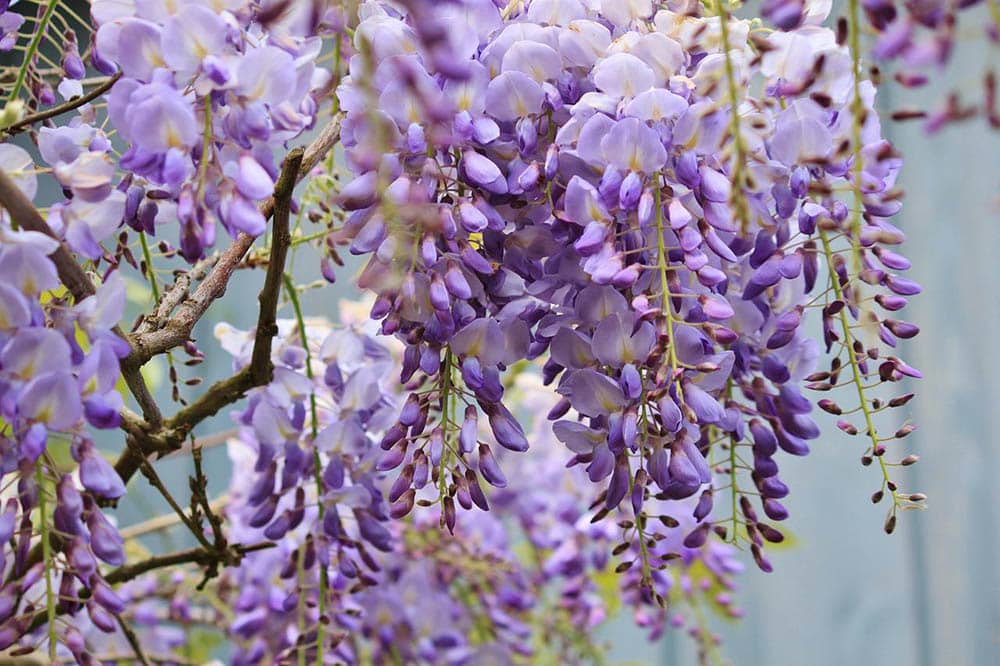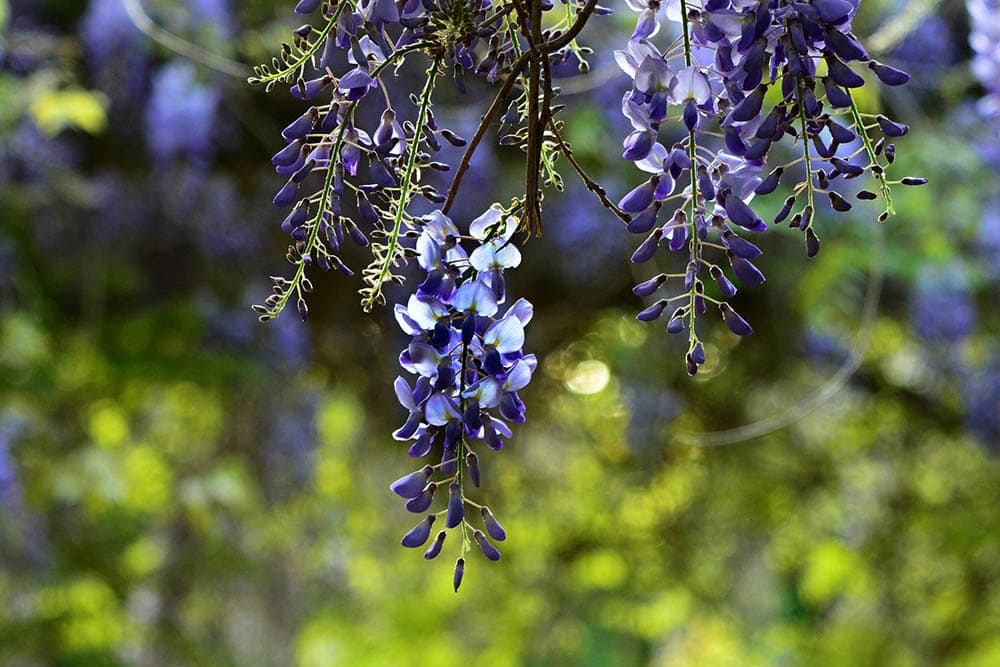When and How to Prune Wisteria (8 Expert Tips)
-
- Last updated:

Wisteria can grow extremely fast in ideal environments. Some wisteria vines can grow up to 10 feet or more in a single year. If you do not prune your wisteria, you will have dozens of feet of the vine to contend with in just a few years. Unmanaged wisteria can become bushy, invasive, and hard to handle. That is why most experts suggest pruning your wisteria regularly. But how often should you prune your wisteria for the best results? What parts should be pruned, and which parts should be left alone?
This brief guide will walk you through eight handy tips about when the best time to prune is and how to prune for the best possible results.

The 8 Tips on When and How to Prune Wisteria
1. Prune Your Wisteria Twice Per Year

Wisteria should be pruned twice every year for the best results. Most experts agree that wisteria does best if it gets cut back in the summer and in the winter, roughly six months apart. Not pruning your wisteria enough can lead to overcrowding which can cause it to falter down the road. It can also cause the wisteria to lose its cultivated aesthetic. Pruning your wisteria too much can cause it to produce fewer blooms and struggle to rebound after the winter is over.
You can use simple pruning shears to work on your wisteria.
2. Prune After Flowering (Summer)
Wisteria flowers in the spring, and the blooms will last a few weeks. Once the flowers start to fall away in early summer, it is time to plan for the summer pruning. You should prune your wisteria in early to mid-summer after the flowers have faded and fallen off. The idea is to keep existing blooms healthy and visible for the next season without letting your wisteria grow out of control. Do not prune your wisteria while it is flowering.
3. Cut Back New Growth to Six Inches

When you see new growth starting to appear on your wisteria, you should trim it back to six inches in length. After the flowering season is over, the wisteria is going to try to grow vigorously through the summer, taking advantage of the long days and humidity. New growth will appear along the vine. You can remove the new growth entirely if the vine looks healthy or keep it short and manageable for the next season.
4. Remove Suckers and Unwanted Shoots
Any new root suckers or unwanted vine shoots can be safely removed. Wisteria spreads via its roots, and these initial growths are its attempt to branch out to somewhere new. For example, if you keep your wisteria on a pergola and it is starting to try to climb down or climb over to your house, you can safely remove these extra growths. Root suckers and unwanted shoots are two of the things that should be removed entirely during the summer pruning session.
5. Prune While Leafless (Winter)

The second pruning should take place in winter after all of the leaves have come off of the wisteria. During winter, wisteria does not die. It goes dormant and waits for spring to return. The buds that are present on the vine during the winter will likely be the buds that will bloom once again in the spring. Without the leaves present, you can get a good idea of the overall shape of the vine and prune in a way to make the flowers healthy and visible come springtime. It is perfectly safe and advisable to prune your wisteria once during these winter months when the plant is dormant.
6. Prune Lateral Branches
The winter pruning is the time to shape the main vine. The main vine will be made up of a large central branch. That is the vine that will produce the most blooms. Lateral branches that protrude from the main branch will only work to crowd your incoming blooms and divert energy from creating vibrant flowers to creating more greenery. You can cut these lateral branches off. If you want to keep a new branch, trim it back so that it has 3 to 5 blooms left on the vine.
7. Only Leave 2-3 Buds

For the cleanest and best-looking wisteria, you should trim your main branches back to 2 to 3 buds each. Pay attention to where the buds are and where the branches are. You want to trim back obstructing branches and make sure the buds are visible on each section so that the flowers will be visible in the springtime.
8. Don’t Be Afraid to Cut Back An Overgrown Wisteria
Old wisteria can be very overcrowded. It might have expanded beyond its original planned area. Old wisteria can have brittle branches, dead or dying sections that are clogging new growth, and an unruly appearance. If you go to prune your wisteria and find that it is bushy, old, or overgrown, do not be afraid to trim it back aggressively. You might feel like you are taking too much off, but if you leave the main stem and keep 2 to 3 buds per section, your wisteria should bounce back just fine come spring. Aggressively pruning an overgrown wisteria can do wonders for its health and its appearance in the following season.

Conclusion
Wisteria should ideally be pruned twice per year. Once in the summer, after the spring flowers fade away, and once in the winter, after all of the leaves have fallen off. Summer pruning is done to keep the wisteria from growing out of control during the long days, and the winter pruning is used to shape the vine for the next flowering season. These tips should help guide you to a healthier and more beautiful wisteria.
Featured Image Credit: cocoparisienne, Pixabay
Contents

